




The following section demonstrates a book reference, a journal reference, and a proceedings reference. Each reference should begin with the bibitem{Name} command. {Name} should be a short name that can be used with the cite{Name} command in the text.
The first reference is a book reference. It shows the authors, the Title in Italics, and the publisher, city, and year of publication in parentheses.
The second reference, for a journal, shows authors, ``title in quotes,'' journal name, Volume number in boldface, complete page numbers (beginning and ending), and year in parentheses.
The third reference is a proceedings reference. The authors, ``title in quotes,'' proceedings name in italics, editors, (publisher and year in parenthesis), and volume and pages.
To produce italics, the command sequence {it{Title in Italics} was used. To produce bold type, the command {bf{Number in boldface} was used. To produce right facing double quotes, 2 single quotes should be used. To produce left facing quotes, use 2 `left quote' marks. On most IBM keyboards this can be found near the number 1 at the top left corner of the keyboard.
For greater convenience and accuracy, OSA has provided a set of standard macros for some commonly used journal abbreviations. They contain special formatting commands to ensure correct spacing. They also save typing and ensure consistent spelling of the journal abbreviations.
See Table 5 for a list of journal abbreviation macros supported by the OSA style option. Other societies also use some of these keystroke saving macros.
Either the \btt{begin\{eqnarray\}} (as above) or the
\btt{begin\{equation\}} (as below)
command may be used to start the equations, in the appendix. The
appropriate ending command must also be given, of course.
\begin{equation} {\rm E} = \case 1/2 mv^2. \label{appa}\end{equation}
\section{}
The following section demonstrates a book reference, a journal reference,
and a proceedings reference. Each reference should begin with the
\btt{bibitem\{Name\}} command. \{Name\} should be a short name that
can be used with the \btt{cite\{Name\}} command in the text.
The first reference is a book reference. It shows the authors, the
{\it Title in Italics,} and the publisher, city and year of publication
in parenthesis.
The second reference, for a journal, shows authors, ``title in quotes,''
journal name, {\bf Volume number in boldface,} complete page numbers
(beginning and ending), and year in parentheses.
The third reference is a proceedings reference. The authors, ``title
in quotes,'' {\it proceedings name in italics,}
editors, (publisher and year in parenthesis), and volume and pages.
To produce {\it italics}, the command sequence
\{\btt{it\{Title in Italics\}} was used. To produce bold type, the
command \{\btt{bf\{Number in boldface\}} was used. To produce right
facing double quotes, 2 single quotes should be used. To produce
left facing quotes, use 2 `left quote' marks. On most IBM keyboards
this can be found near the number 1 at the top left corner of the
keyboard.
For greater convenience and accuracy, OSA has provided a set of standard
macros for some commonly used journal abbreviations. They contain
special formatting commands to ensure correct spacing. They also
save typing and ensure consistent spelling of the journal abbreviations.
See Table \ref{abbrev} for a list of journal abbreviation macros
supported by the OSA style option. Other societies also use some
of these keystroke saving macros.

\begin{references}
\bibitem{smith82}F. Zernike and J. Midwinter, {\it Applied Nonlinear
Optics} (Wiley, New York, 1973).
\bibitem{jones78}K. W. Kirby and L. G. DeShazer, ``Refractive indexes
of 14 nonlinear crystals isomorphic to ${\rm KH}_2{\rm PO}_4$,'' \josab
{\bf 4,} 1072-1078 (1987).
\bibitem{jonessmith80}C. C. Skiscim and B. L. Golden, ``Optimization
by simulated annealing: a preliminary computational study for the TSP,''
in {\it Proceedings of the 1983 Winter Simulation Conference,} S. Roberts,
J.Banks, and B Schmeiser, eds. (Institute of Electrical and Electronics
Engineers, New York, 1983), Vol.\ 1, pp. 523-535.
\end{references}
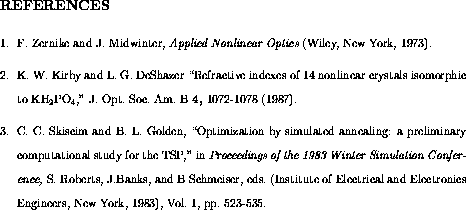
Figure 1: A figure caption. The figure captions are automatically
numbered.

Figure 2: The ``late figure.'' This figure was inserted when the paper
was finished. Since the figures are automatically numbered,
no renumbering in text was necessary. All that
needed to be done was to type the caption in the
proper place and cite the figure in text.
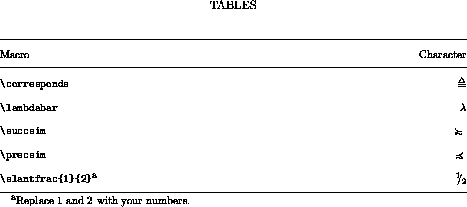
Figure 3: A figure caption. Figures will be reduced to an appropriate
size by the production staff of the journal.

Figure 4: A figure caption. The labels you give tables and figures
can be descriptive.
\begin{figure}
\caption{A figure caption. The figure captions are automatically
numbered.\label{autonum}}
\end{figure}
\begin{figure}
\caption{The ``late figure.'' This figure was inserted when the paper
was finished. Since the figures are automatically numbered,
no renumbering in text was necessary. All that
needed to be done was to type the caption in the
proper place and cite the figure in text.\label{latefigure}}
\end{figure}
\begin{figure}
\caption{A figure caption. Figures will be reduced to an appropriate
size by the production staff of the journal.\label{reduced}}
\end{figure}
\begin{figure}
\caption{A figure caption. The labels you give tables and figures
can be descriptive.} %%%%%
\label{figure4}%%%%
\end{figure}

Table 1: OSA special characters and the macros to produce them.
(This is a small table, which would occupy the width of a
narrow column in the finished article.
In manuscripts all tables
will be displayed with the same width you see here.
Also, table captions are automatically numbered.)
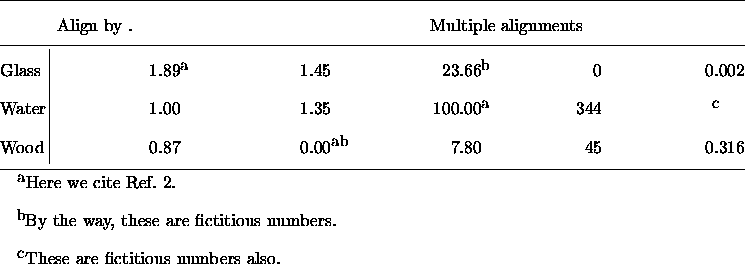
Table 2: A table with math characters. Two alternative
occupations of special positions
by KMnCL ions in the two space groups
ions in the two space groups 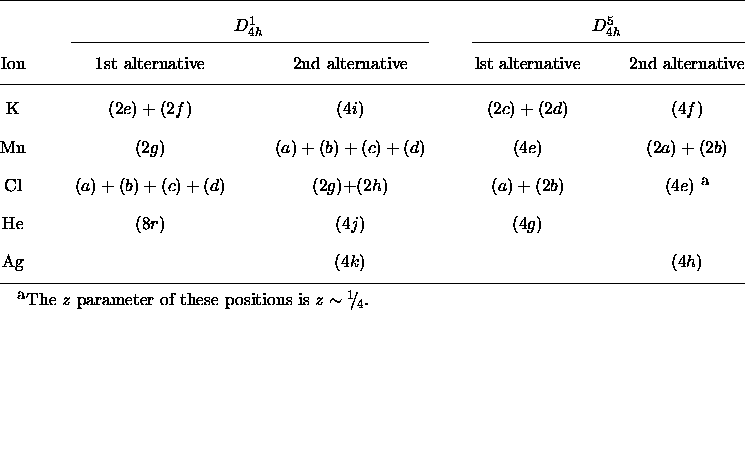 and
and 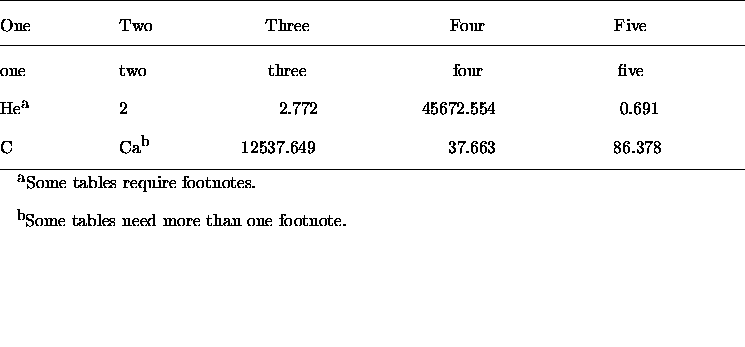 .
For a special value of the x and y parameters, a
set of special positions may
split into two sets of special positions of higher symmetry.
This table's footnote was inserted using the ``tablenote"
command at the point of insertion.
.
For a special value of the x and y parameters, a
set of special positions may
split into two sets of special positions of higher symmetry.
This table's footnote was inserted using the ``tablenote"
command at the point of insertion.
\begin{table}
\caption{OSA special characters and the macros to produce them.
(This is a small table, which would occupy the width of a
narrow column in the finished article.
In manuscripts all tables
will be displayed with the same width you see here.
Also, table captions are automatically numbered.)}
\begin{tabular}{lr}
Macro & Character\\
\tableline
\verb+\corresponds+&$\corresponds$ \\
\verb+\lambdabar +&$\lambdabar$ \\
\verb+\succsim +&$\succsim $ \\
\verb+\precsim +&$\precsim$ \\
\verb+\slantfrac{1}{2}+\tablenote{Replace 1 and 2 with your numbers.}
&$\slantfrac{1}{2}$
\end{tabular}
\label{table1}
\end{table}
\begin{table}
\caption{A table with math characters. Two alternative
occupations of special positions
by KMnCL$_3$ ions in the two space groups $D_{4h}^1$ and $D_{4h}^1$.
For a special value of the $x$ and $y$ parameters, a
set of special positions may
split into two sets of special positions of higher symmetry.
This table's footnote was inserted using the "tablenote"
command at the point of insertion.}
\begin{tabular}{ccccc}
&\multicolumn{2}{c}{$D_{4h}^1$}&\multicolumn{2}{c}{$D_{4h}^5$}\\
\cline{2-3} \cline{4-5}
Ion&1st alternative&2nd alternative&lst alternative
&2nd alternative\\ \tableline
K&$(2e)+(2f)$&$(4i)$&$(2c)+(2d)$&$(4f)$\\
Mn&$(2g)$&$(a)+(b)+(c)+(d)$&$(4e)$&$(2a)+(2b)$\\
Cl&$(a)+(b)+(c)+(d)$&$(2g)$+$(2h)$&$(a)+(2b)$&$(4e)$
\tablenote{The $z$ parameter of these positions is
$z\sim\kern-1em\slantfrac{1}{4}$.}\\
He&$(8r)$&$(4j)$&$(4g)$\\ %
Ag& &$(4k)$& &$(4h)$\\
\end{tabular}
\label{table2} % for cross references, only
\end{table}
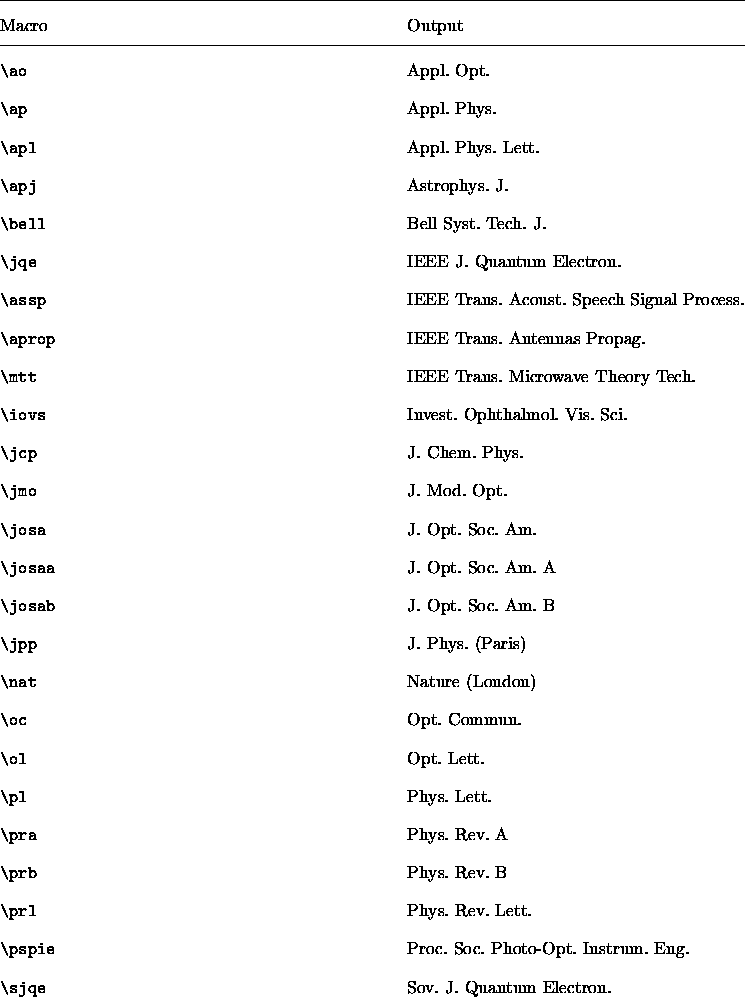
Table 3: Another table. This shows decimal and implied-decimal
alignments. Predecimal zeros are required according to OSA style.

Table 4: A ``late table.'' This table was added after most of the
paper had been completed. Since the tables are
automatically numbered, no renumbering in text was necessary. This
table was added to show the use of the d specifier for lining
things up. This time I am going to use the tablenotemark command in the
body of the table and the tablenotetext command at the end. This
permits multiple citations of the same reference.
\begin{table}
\setdec 00.00
\caption{Another table. This shows decimal and implied-decimal
alignments. Predecimal zeros are required according to OSA style.}
\begin{tabular}{llcdcc}
One&Two&Three&Four&Five\\
\tableline
one&two&three&four&five\\
He\tablenote{Some tables require footnotes.}&2&\dec 2.772
& 45672.554 & 0.691 \\
C&Ca\tablenote{Some tables need more than one footnote.}
& 12537.649 & 37.663 &\dec 86.378 \\
\end{tabular} %%
\label{table3}
\end{table}
\begin{table}
\caption{A ``late table.'' This table was added after most of the
paper had been completed. Since the tables are
automatically numbered, no renumbering in text was necessary. This
table was added to show the use of the d specifier for lining
things up. This time I am going to use the tablenotemark command in the
body of the table, and the tablenotetext command at the end. This
permits multiple citations of the same reference.}
\begin{tabular}{l|dddrd}
\multicolumn{2}{c}{Align by .}&
\multicolumn{4}{c}{Multiple alignments}\\
\tableline
Glass& 1.89\tablenotemark[1]& 1.45& 23.66\tablenotemark[2]& 0& 0.002\\
Water& 1.00& 1.35& 100.00\tablenotemark[1]& 344& \tablenotemark[3] \\
Wood & 0.87& 0.00\tablenotemark[1]\tablenotemark[2]& 7.80& 45& 0.316\\
\end{tabular}
\label{latetable}
\tablenotetext[1]{Here we cite Ref.\ \onlinecite{jones78}.}
\tablenotetext[2]{By the way, these are fictitious numbers.}
\tablenotetext[3]{These are fictitious numbers also.}
\end{table}

Table 5: OSA Journal abbreviations and the macros to produce them.
Unfortunately, in manuscript style this table will not fit on 1
page. The input for this table starts below the last lines of output,
on the facing page.
\begin{table}
\caption{OSA Journal abbreviations and the macros to produce them.}
\begin{tabular}{ll}
Macro & Output\\
\tableline
\verb+\ao + & \ao \\
\verb+\ap + & \ap \\
\verb+\apl + & \apl \\
\verb+\apj + & \apj \\
\verb+\bell + & \bell \\
\verb+\jqe + & \jqe \\
\verb+\assp + & \assp \\
\verb+\aprop + & \aprop \\
\verb+\mtt + & \mtt \\
\verb+\iovs + & \iovs \\
\verb+\jcp + & \jcp \\
\verb+\jmo + & \jmo \\
\verb+\josa + & \josa \\
\verb+\josaa + & \josaa \\
\verb+\josab + & \josab \\
\verb+\jpp + & \jpp \\
\verb+\nat + & \nat \\
\verb+\oc + & \oc \\
\verb+\ol + & \ol \\
\verb+\pl + & \pl \\
\verb+\pra + & \pra \\
\verb+\prb + & \prb \\
\verb+\prl + & \prl \\
\verb+\pspie + & \pspie \\
\verb+\sjqe + & \sjqe \\
\verb+\vr + & \vr \\
\end{tabular}
\label{abbrev}
\end{table}
\end{document}



